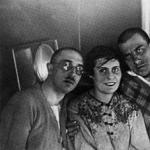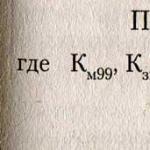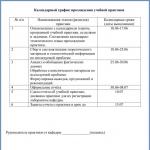You can also use starch to prepare a paste, but today I will talk specifically about flour.
So, how to make a paste from flour for wallpaper recipe. First we need a sieve and flour. Flour of the first grade is excellent, as it is coarser, which has a very good effect on the quality of our glue. Be sure to strain the flour so that there are no lumps left. We need 250 grams of flour per 1 liter of water, or a proportion of one to three.
How to make paste yourself
First, pour the flour into a glass bowl and pour the glass cold water, stir thoroughly with a whisk or fork until a homogeneous mass is obtained.
After this, pour the mixture into the pan, add the rest of the water and mix thoroughly until a homogeneous mixture is obtained. Turn on the stove over low heat and let our mixture cook for at least 10 minutes, making sure to stir continuously; for this we use a long wooden or plastic spoon.
After this, you can say that your paste is almost ready. It remains to wait until it cools down completely, and very important point Do not put the glue in the refrigerator so that it cools faster. It should cool down on its own. And only after that you can start wallpapering. A very important point is that after cooling, use the glue no more than 2 hours in advance, since after 2 hours or more it loses its adhesive properties. Therefore, prepare it just before pasting.
DIY wallpaper paste (video)
Advantages and disadvantages of homemade glue
Below in the table you can see all the pros and cons of this homemade wallpaper adhesive. After reading them, you can draw a conclusion for yourself.
As you can see, there are many more advantages. Therefore, choosing a paste will still be to your advantage. Since such glue is much cheaper in price than branded store-bought adhesives, this way you will save your family budget.
Using homemade wallpaper glue
You have already learned how to make wallpaper paste. Now let's talk about its application. Because nowadays huge selection branded adhesives, the use of paste is not very popular. Many are afraid to use it, but this is not entirely justified. I would like to note the fact that this homemade adhesive is perfect for most existing wallpaper. These can be either ordinary paper or more durable types, vinyl-based, non-woven and even photo wallpaper and glass wallpaper.

Before you start wallpapering, you need to take care of the tools. Here is the required list:
- Bucket for storing adhesive mixture
- Macrowitz or roller
- Several small rags
- Blade trimming knife
- Tape measure and pencil
Many people say that glue is only applied to the wall. But this is not so, some types of wallpaper begin to swell and cover the canvas with bubbles, so I recommend that you always apply glue to both the wall and the wallpaper. Next steps no different from using store-bought glue.
- DIY wallpaper glue made from flour (photo and video)
- Photo instructions on how to make homemade glue with your own hands.
- Pour flour into a bowl.
- Pour a glass of water and stir.
After obtaining a homogeneous mass, put it on the fire for 10 minutes, pour out the rest of the water. Your paste is ready, be sure to cool it. Visual video A tutorial on how to make paste share the wallpaper here.
Photo gallery of finished works





Paste, in my opinion, is the most accessible and relatively cheap glue, which is so necessary when working in technology papier-mâché(PM). It is done quite easily and quickly, in a matter of minutes and in your hands indispensable assistant:) I'll tell you how to cook it. Maybe someone already knows how, but for others it will be the first time.
What is needed for the composition of the adhesive paste?! Flour, any measuring container, depending on the volume of the mass made, water and a whisk. The recipe itself: 1 part (glass) flour + 3 parts (glasses) water.
Take 1 part flour
Pour into a saucepan
Add 1 part water
Beat well with a whisk
Add 2 more parts of water
Mix everything well again
Place the saucepan with the mixture on the fire
Bring to a boil, stirring the mixture continuously with a whisk.
The mass should be homogeneous, without lumps. If such an incident occurs, then you just need to strain the cooled glue through gauze.
Pour the finished glue into a container with a lid and store it in the refrigerator. Let me add right away: it is advisable to store it for a short time, because this product is closer to food, it has the property of an expiration date, like any food product
That's the whole trick, easy and accessible! Natalya was with you!
We cook the paste for children's creativity
Probably many in last time dealt with paste during appliqué classes kindergarten. It is not by chance that paste is used: it is completely harmless and easy to use.
The word itself " paste"came to us from German language and means " glue made from starch or flour"(which is the whole technology of its preparation). The product is 100% natural! It contains absolutely no foreign chemical impurities, which means it does not irritate the skin and does not cause allergies. Therefore, the paste can be useful for many home crafts.
For example, it is most convenient with paste glue products using papier-mâché technique, it can also be used in the manufacture of frame souvenir toys and for any applications made of paper or fabric.
Very quickly and does not require any material or time costs from you. So let's get started! You need: flour, water and hands. Suitable instead of flour starch, and it makes absolutely no difference whether it is potato or corn.
Take a convenient bowl in which you will knead and brew paste. Absolutely any container into which a whisk or fork can easily fit is suitable for mixing.
Pour into a cup 2-3 tablespoons flour or starch, then pour half a glass of cold water and stir quickly until homogeneous pulp.
Water is always poured into flour, rather than flour poured into water - this way the paste will be better stirred. Particularly thrifty owners can, for this purpose, collect leftover flour from baking, sifted through a fine sieve (this will be counted in the list of your virtues in the column “Saving natural resources”)
Exists little technological secret, which only physicists or wizards can explain: to prevent the paste from souring and forming lumps, you need to stir it in a cup “ salting" - that is in the course of the Sun, clockwise. But if you are used to it differently, then interfere as you prefer.
Now you need some flour flour brew with boiling water in the amount of about one glass. Mathematicians can focus on the proportion of 1:15, but in general, more often the proportions of the ingredients for the paste are taken by eye, because small differences in consistency do not affect its adhesive properties.
Pour boiling water in a thin stream into the flour mixture while stirring vigorously, the paste thickens and becomes homogeneous.
If it “slowly thickens,” you can pour it into a small fireproof container and hold it on the stove for a little while (stirring, stirring, stirring), at medium temperature, literally for about 5 minutes (depending on your stove), but do not bring it to boiling.
Paste heated on the stove will begin to “puff” slightly and form small bubbles on the surface. Quickly remove this from the heat and cool in a window or in a large bowl with cold water. The cooled glue will become a little thicker, so it is better to immediately prepare it taking this circumstance into account. A thinner glue will be easier to work with.
That's all! Paste ready to be your reliable assistant in the creative process!
And what’s valuable is that you can cook it in literally three minutes (including washing up).
And now - a few practical nuances.
From starch it turns out more transparent-looking paste(reminiscent of jelly), and made from flour - cloudy whitish(reminiscent of sauce). Both stick equally well.
Don't make “strategic reserves”! Boil the paste It’s better to use small portions so that it’s enough for an hour or two of work. Working with fresh paste is definitely more pleasant.
If there is still some amount of paste left after yours, you need it Keep refrigerated, closing it with a lid or placing it in a plastic bag so that it does not collect odors and does not get airy. Or you can glue up the loose corners of wallpaper in your apartment.
If the paste becomes too thick during storage, it can be slightly diluted again with boiling water (1-2 tablespoons) and stirred thoroughly.
During storage adhesive qualities of the paste decrease slightly every day. A soured or moldy paste left in the refrigerator, of course, should be thrown away...
The paste, even if slightly dried, is easily washed off the skin warm water with soap. But if you drop paste on clothes, furniture, or the floor, it is better not to wait for it to dry, but to immediately wipe it off with a damp cloth.
If in the process of creativity tries to persistently taste the paste - do not interfere with him. If the paste is fresh, and not from the day before yesterday, then there will be no harm. And the child, most likely, will not like to eat the paste, because it tastes like an unleavened thick flour sauce or jelly, and the child will quickly stop this activity)
Kirill Sysoev
Calloused hands never get bored!
Content
The modern market offers incredible wide choice diverse different types glue. However, not all of them are of high quality, and the reliability of the fastening remains in question. Our grandmothers also made their own glue, with which they could hang wallpaper or make some kind of craft.
How to make paste from flour

This is a completely natural and environmentally friendly product, which does not contain any dangerous chemical impurities. It is important to know how to prepare a paste from flour so that the resulting material has top quality– for example, I was able to hold even very heavy wallpaper on the wall. How to make a paste from flour, what equipment and technology features will be needed:
- The best choice is the product low quality, because this product has high degree viscosity Before use, it must be sifted well through a fine sieve to remove lumps.
- The main condition of preparation quality product– cold water must be used.
- To mix all the components efficiently and quickly, it is recommended to use a mixer or blender.
- It is necessary not only to know how to brew the paste, but also to constantly monitor the preparation process so that the solution does not burn. The work will be completed only after the lumps are removed.
- Cooking should take place over minimal heat.
- The solution is constantly stirred, boiled for several minutes, then removed from the stove, then left for a while to cool well. Hot products cannot be used for work.
- If you need to know how to quickly cook paste from flour, it is best to use metal utensils during its preparation.
- To prevent the mixture from burning, it is recommended to cook it in a water bath, but then the process will take longer.
How to make glue from flour
Considering the purpose for which homemade flour glue will be used, there are some differences in the process of its preparation. This product can replace the usual PVA glue. This solution is recommended for gluing wallpaper, making children's crafts, etc. It is not necessary to know how to quickly make a paste from flour, because you only need to strictly follow the recipe, otherwise the finished solution will be of poor quality.
For wallpaper
If you are interested in the question of how to cook paste from flour for wallpaper, you should use the following recipe:
- If you need to make glue, take pre-sifted flour so that there are no lumps in it (1 cup or 250 grams).
- Gradually add water in small portions until you get a creamy solution.
- The ingredients are mixed well to dissolve the resulting breasts.
- Then the rest of the water is poured in - as a result, the total volume should be exactly 1 liter.
- If the solution is too thick, add a little more hot water.
- To make a homemade product, you must take a base - PVA glue (0.5 tbsp.).
- Take a metal spoon and mix the ingredients thoroughly.
- The composition is placed on water bath and cook over low heat for some time until small bubbles begin to form on its surface.
- Ready mix removed from the stove and checked for lumps. If they appear, be sure to filter through several layers of gauze.
- Knowing how to cook paste from flour, you must remember that it must cool completely naturally and only after that can it be used for work.
- A characteristic film appears on the surface of the cooled mixture, which must be removed.

For papier-mâché
Not a single children's creativity lesson can pass without crafts, so parents often have the question of how to make paste from flour. To do this, you can use the following recipe:
- Take a saucepan with a thick bottom and pour 1 tbsp. rye flour.
- Pour 1 tbsp. water and the solution is mixed well with a mixer.
- Gradually add another 2 tbsp. liquid and the mass is stirred until the lumps dissolve.
- The container is placed on the stove and the composition is brought to a boil.
- Then the solution is removed from the heat and left until it cools completely.
- The product is allowed to be stored in glass containers with tightly closed lids, but no more than 2 days.
- Having studied the question of how to cook a paste from flour for papier-mâché, you don’t have to worry that the finished craft will fall apart.
Modern construction specialists who are engaged in pasting rooms, with the abundance of various expensive compounds on the shelves, do not even think about how to prepare glue from flour for wallpaper. But even now, many people, especially in the outback, not having the funds for an expensive product, try to prepare it themselves. If you know how to make wallpaper glue from starch, you can even cover a room with damp walls.
Main components of the compositions
In many old buildings, seeing perfectly papered rooms, we cannot imagine that twenty years ago the preparation of wallpaper glue was carried out in the kitchen of this apartment. The main components of the compositions were:

The adhesive properties of potato starch and flour gluten have been known since ancient times, and when additional components are added, they increase significantly.
DIY wallpaper glue made from flour
If you spend a little time (about half an hour) you can produce an inexpensive, high-quality product that is not inferior to an industrial one. Its basis is wheat gluten flour, which is sold in stores and is very cheap.
The first composition is a paste for wallpaper and paper:
- take flour (calculation – 2 tablespoons per 1 liter of water);
- pour warm water into a container and stir the flour in it;
- put on low heat and cook for five minutes.
This product is used for gluing wallpaper, as well as joining paper and cardboard.
Second composition - wallpaper glue from flour:
- take flour (calculation – 1 part to 3 parts water);
- pour flour into a container (large pan or bucket);
- pour plain water and stir until the mass becomes homogeneous;
- put the container on the stove and cook over very low heat until it boils, stirring constantly;
- after boiling, remove from heat, strain and cool;
- the composition is ready.
As you can see, this work is not labor-intensive and simple. You can check the quality like this: take the resulting mass with two fingers. The composition should drain. If this is not the case, you need to add a little warm water and stir.
Squeeze the mixture between your fingers and then slowly unclench them. If you feel some stickiness and elasticity when you open your fingers, then the composition is ready. If this does not happen, you need to add flour and repeat the process again.
DIY wallpaper glue made from starch
Some ingredients (for example, turpentine) used in formulations based on potato starch are now very difficult to obtain. Therefore, it is easier to make glue using alcohol.
For regular walls:
- mix 750 g of potato starch in 200 ml of denatured alcohol or wood alcohol;
- pour in 1.5 liters of water and mix;
- add 8-9 liters of boiling water;
- bring the mixture to a boil;
- separately from this, dissolve 100 g of alum in 0.3 liters of water;
- add alum solution to the resulting mixture and stir;
- the resulting composition is cooled and filtered.
For damp walls.
Many still remember the times when their parents made their own paste in their kitchen at home for various household needs.
Pasting walls
In what cases do professionals use paste?
Currently, employees of children's institutions, workers of cultural centers, theaters and libraries, as well as landscape designers and agronomists know how to cook paste from flour.
Librarians sometimes use this glue in bookbinding.
Gardeners and gardeners use natural glue when planting very small seeds. A strip of paper is moistened with paste, seeds are poured onto it, dried and laid out on a garden bed or flowerbed in the intended order. Having verified the drawing, the paper with the seeds is covered with earth.
Educators and school teachers natural and harmless paste is often used for children's creativity in classes aimed at developing fine motor skills, spatial thinking and concentration in children. If a child accidentally licks the paste with his tongue or rubs his eyes with a dirty hand, no harm will happen, because the paste is made from flour and water.
When creating sets for theatrical productions, directors and artists widely use objects made using the papier-mâché technique. The essence of this technique is that craftsmen create light and durable objects from paste and paper. Since it is not difficult to make a paste from flour, and the paper necessary for papier-mâché is an easily accessible material, anyone can learn this art.

Technological process for making paste
Papier-mâché requires the ability to make a paste from flour. The recipe for making it is similar to how regular jelly is cooked:
The sifted flour is poured with cool water and stirred thoroughly. This must be done in metal utensils, since then it will have to be put on fire;
Boil water separately;
Pour boiling water into the flour mixture while constantly stirring and bring to a boil on the stove;
After the mixture boils, remove it from the heat and cool under the lid so that a film does not form on top;
If you cannot avoid the formation of lumps and film, then simply strain the paste through a sieve or gauze.
The paste can be used warm. As soon as you decide on the amount of work ahead, brew and test the resulting flour paste. Check the recipe and write it down in a memo so that you always cook the amount of glue that you will use in one to three days. This way you can avoid unnecessary consumption of flour, and also plan your time correctly.

How to choose the right recipe
If you have planned work for several days, then do not large stock glue for a long time, since it is a perishable product. The proportion of ingredients must be verified for each individual case. Natural paste made from flour does not have a recipe as such. It all depends on the gluten content of the flour. In addition, over time the paste changes thickness. However, it can be diluted with water to the required consistency. To begin with, calculate this: for one liter of water - two tablespoons of flour. In old books on home economics, in the section “how to cook paste from flour”, weight units are not given precisely because of the differences in adhesive and other characteristics of different types of flour. If the paste is made from potato or corn flour, that is, starch, then it can be stored in the refrigerator for up to seven days. Potato paste is always thicker than corn paste. Positive quality starch paste - it does not leave stains. A product made from wheat or rye flour spoils faster, but it is more sticky than starch flour. Each master makes his own unique flour paste; the recipe is always refined and tailored to each work individually.

Papier-mâché using the technique of sheet layers, or mashing
Using this technique, you can create a variety of utensils, ethnic and carnival masks, boxes, toys, jewelry, sculptures, and so on.
You will need paper - this could be old newspapers, magazines, notebooks, napkins or thin wrapping paper. The thinner the paper, the smoother it is smoothed out, but then you will have to make more layers. Next, a base is taken, which is initially covered with paper soaked in ordinary clean water. The next layer is glued onto this layer, but already soaked in paste. There should be at least five such layers, sometimes up to a hundred are glued. It all depends on the thickness of the paper and how thick and strong you want the thing to be. Only the outer surface of the layout is covered with paper. When all layers are properly dry and hardened, they need to be cut through with a blade or cutter. Since the first layer was glued using clean water, then it will easily come off the workpiece along with the layers of paper coated with paste glued to it. The removed halves need to be folded together and connected at the junction with a strip of paper smeared with paste. Then you can apply a few more layers if you want the craft to become thicker and the connection of the parts to be stronger. When applying sheets, they must be carefully smoothed with a sponge or soft cloth so that the product is as smooth as possible. Last layer make it white or something else beautiful decorative paper. When all the layers are glued and dry, you can start painting, decorating decorations and other elements. The finished item is varnished.

Paper papier-mâché as a mass for sculptural works
For those who have figured out how to make paste from flour, you can try to master another version of the papier-mâché technique. The paste is mixed with cellulose and turns into a thick mass reminiscent of clay, plasticine or dough. For this, it is very good to use soft paper, such as toilet paper or napkins. The paper is crushed and mixed with paste. In some cases, it is required that the glue be more elastic, then glycerin is added to it. After the paper swells, you can sculpt figures from it. Products made from papier-mâché take quite a long time to dry, since in order to avoid deformation they should be dried in a warm place away from heating equipment. Long drying time is the only disadvantage of this craft. The resulting irregularities can be easily sanded sandpaper. Dried and polished crafts are painted, decorated, and then varnished.

Papier-mâché made from cotton wool
Very interesting crafts can be made from cotton balls and disks soaked in paste. It could be voluminous jewelry for photo frames, albums, boxes, flower pots and much, much more. Decoration made from cellulose and paste is characterized by lightness and strength of articulation. This is its advantageous difference from clay or other inflexible and heavy weight ones.

















